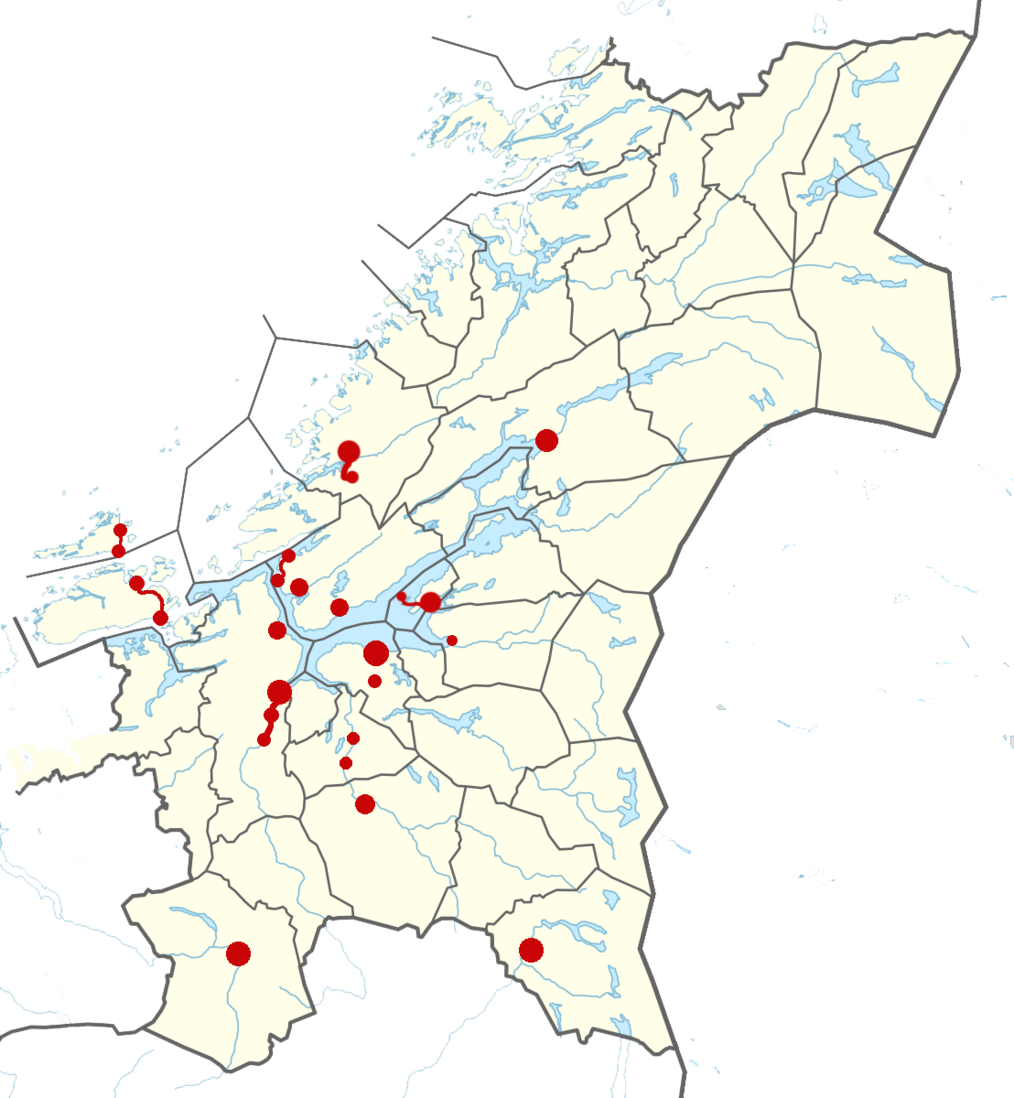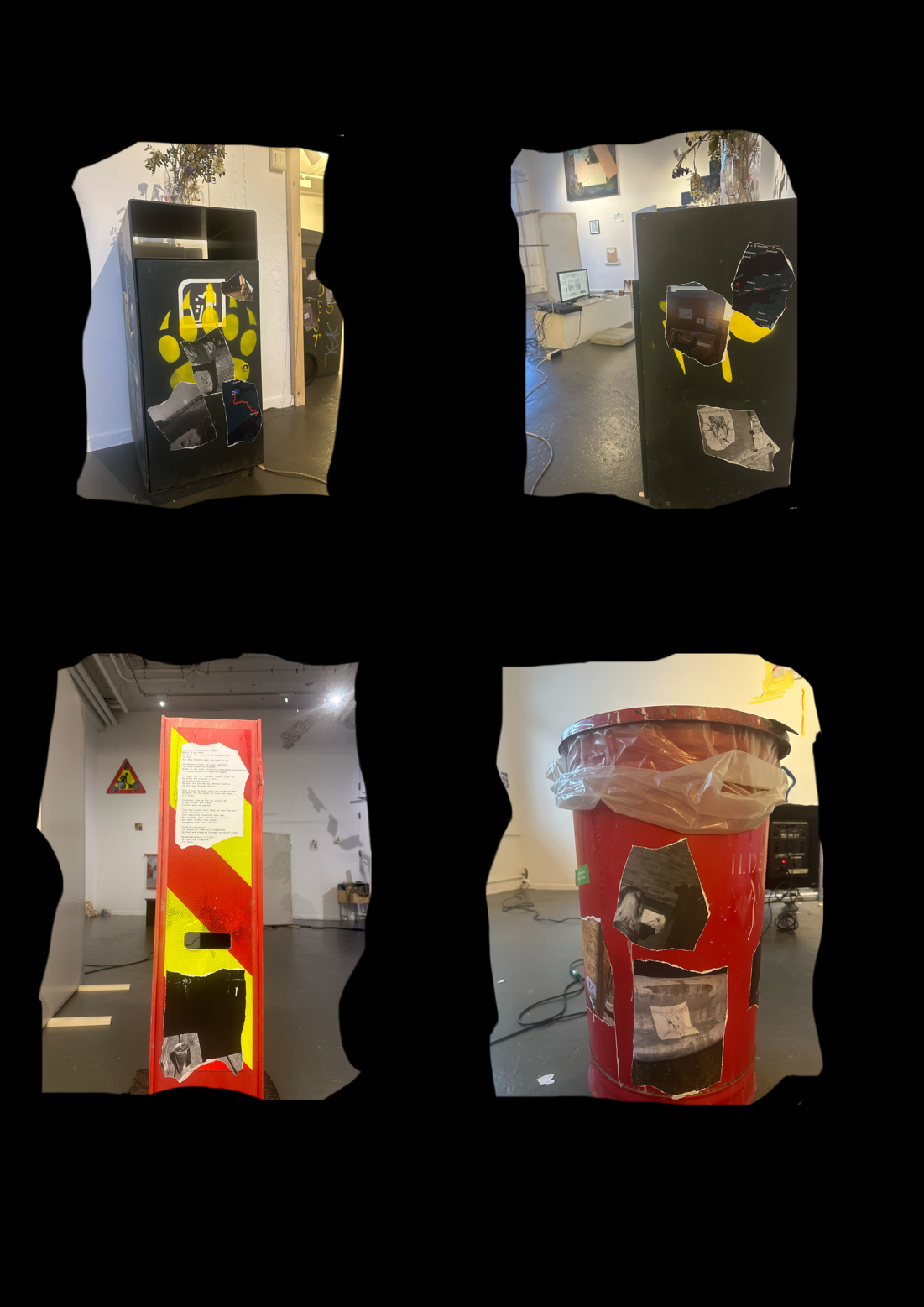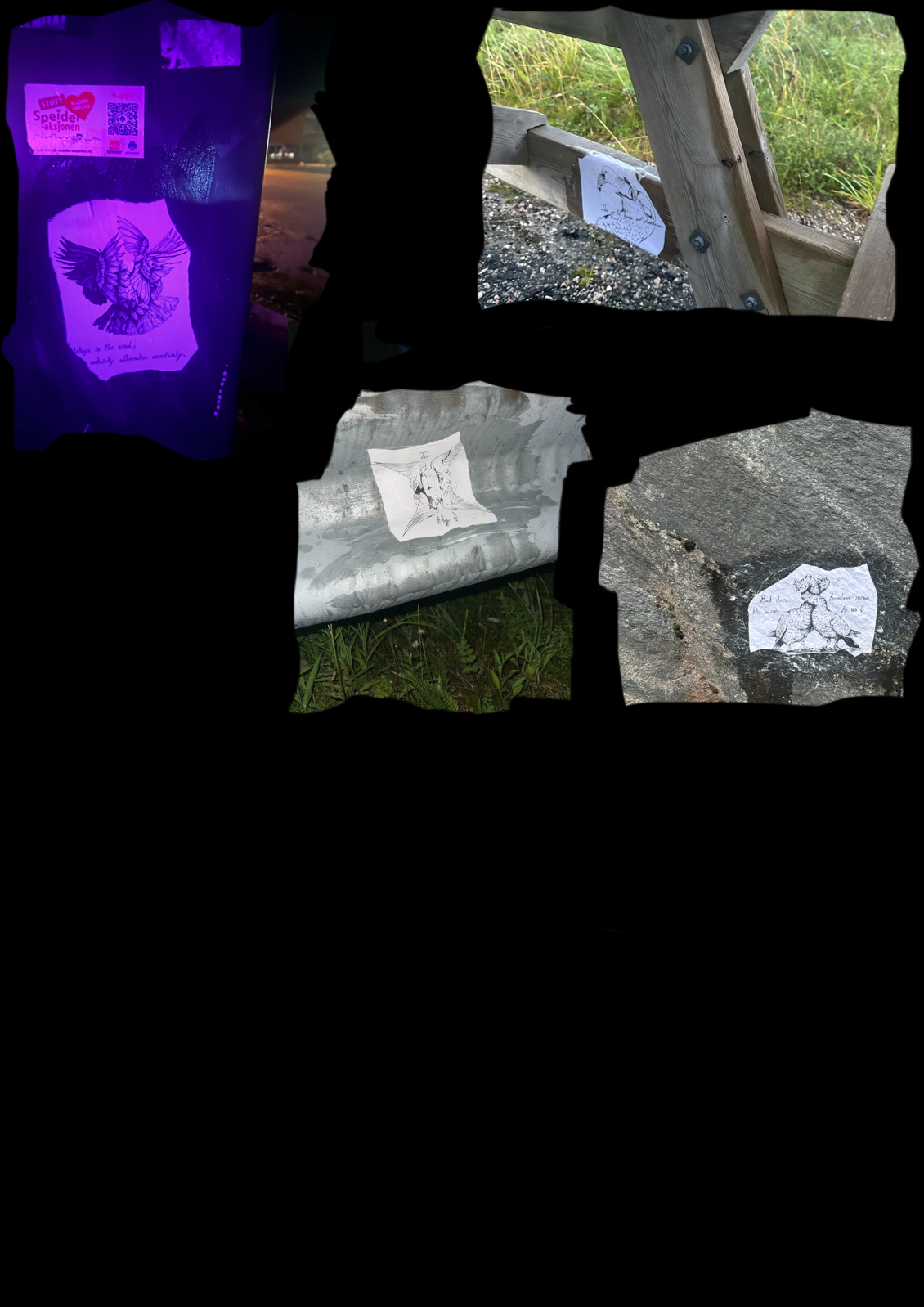I focus on creating connections between the personal and the public, the emotional and the political. I work across illustration and street art. Often using drawing as a language for vulnerability and resistance. The pigeon, a creature that was once rejected, has become a symbol for my project, reflecting the human struggle of belonging and questioning what “freedom” means.
Each verse has been transformed into a illustration, later wheat-pasted in public places such as trees, trash can, walls and more across Trøndelag. The process spreads quietly through the region like the flight of pigeons themselves with almost invasive narrative. In my practice I try to observe the world from the perspective of what is often unseen or undervalued, like animals, discarded spaces, or neglected emotions.
My goal is to make art that is poetic, socially aware and rooted in both personal mirror and public dialogue.
I would love to collaborate with local institutions or communities to reflect on the coexistence between humans and urban animals, exploring how freedom and dependency are negotiated in shared environments.
I plan to experiment further with illustration, photography and maybe other visual mediums in urban areas. Conceptually, I want to deepen the project’s reflection on how domesticated animals like pigeons, once symbols of peace and communication, are forced to survive in urban places. Their condition becomes a metaphor for human psychological states of exile and searching.
I invite chance encounters and spontaneous reflection, transforming everyday surroundings into places of poetry. My long-term goal is to continue developing this project after graduation, expanding it into other cities and possibly connecting these two worlds through communities and other opportunities.
My project explores the relationship between illustration, poetry, and urban space. Through a project titled “Metamorphosis of Home”, I use the pigeon as a symbol to question of belonging, identity, and freedom, both with human, animals and nature. I began the project with a poem written during a period of personal struggles and has evolved into a series of posters (drawings) placed around the Trøndelag region.
Each poster corresponds to a verse from the poem, creating a “silent performance” spreaded across towns and villages. The work reflects the psychological and biopolitical tension between home and exile, domestication and independence and so on…
Now I aim to continue and expand this project, deepening its connection to public space and local communities.
I plan to continue developing my project in public space. The current phase focused more on Trøndelag’s smaller towns and rural areas, where I installed my posters. Slowly also spreading across Trondheim. This migration/ process mirrors the pigeon’s adaptive movement and also my own process of searching for belonging.
I hope the next phase of the project will expand into several directions.
Continuing through the Trøndelag region, as I intend to visit more communes during the next period of time, extending the project’s visual map. Later the project may evolve into a larger site-specific installation, bringing together documentation, stories, and new visual material.
In the end of October this semester, I participated in the master’s group exhibition called “Cross Pollination”, which centered on collaborative curation and how we affect each other’s creative process.
For this exhibition, I chose not to display final drawings/posters, but instead I focused on the documentation of the process, photos taken throughout my small travels for the project. I brought urban objects from the outside, such as trash cans, street signs, and more… I brought these objects into the gallery space and wheat-pasted my torn photographic prints onto them, using the same paper and technique as my original posters outside. The photographs depicted situations, landscapes, route maps, moments like meals and breaks and photos of myself installing the work outside.
By presenting my creative process, I aimed to show the physical and emotional background of my project, while giving myself one last opportunity for playful experiment before entering the more serious final phase of my master’s work and graduation.
- Hell - Hitra (Sandstad/ Fillan)
- Orkanger - Frøya (Sistranda/ Hammarvika)
- Lensvik - Hasselvika
- Melhus - Fevåg
- Lundamo - Røros
- Støren - Oppdal
- Ler - Åfjord
- Vanvikan - Mørreaunet
- Vormstad - Frosta
- Fanrem - Tautra
- Kattem. - Trondheim
- Rissa
- Steinkjer
Ingredients (1,7L batch):
- 1 cup of white flour
- 6 spoons of cornstarch
- 7 spoons of crystal sugar
- 6 spoons of wood glue
- water
Instructions:
1. Boil 5 cups of water over medium heat.
2. Separately whisk flour, cornstarch and sugar with 1cup of cold water until it becomes smooth.
3. Slowly pour the mix into the boiled water, while stiring constantly.
4. Stir for 5-8 min. until is thick and glossy.
5. Leave it for 15 min. and add glue and mix it again.
6. Cool it and store it.
Tips:
- Wheat-paste usually starts fermenting after 4 days, which after that it becomes less effective.
- Wheat-paste is a really effective form of glue, but is really easy to wash it off from your clothes.
This recipe is the result of many attempts and small adjustments over time. I originally started with really simple version of wheat-paste made only from flour and water, but it quickly became clear that it wasn’t strong enough to handle the unpredictable Norwegian climate. As I gathered new tips, the recipe evolved into an effective mixture. The version here has proven to hold up well against rain, wind, humidity and hopefully even snow and freezing temperatures.
The choice of paper is important too. It shouldn’t be too thick nor too thin. In my own experience, basic white office paper works surprisingly well and is also cheap alternative. Tearing the edges of the paper can help it blend into surfaces and stick more effectively. Materials like wood, metal, and plastics give the best results, while rough surfaces such as rock or concrete can be more challenging. Posters placed under a roof or in partially sheltered spots tend to last longer, but I had seen many of them survive out in the open space for five to six months (until now) without any shelter at all.








